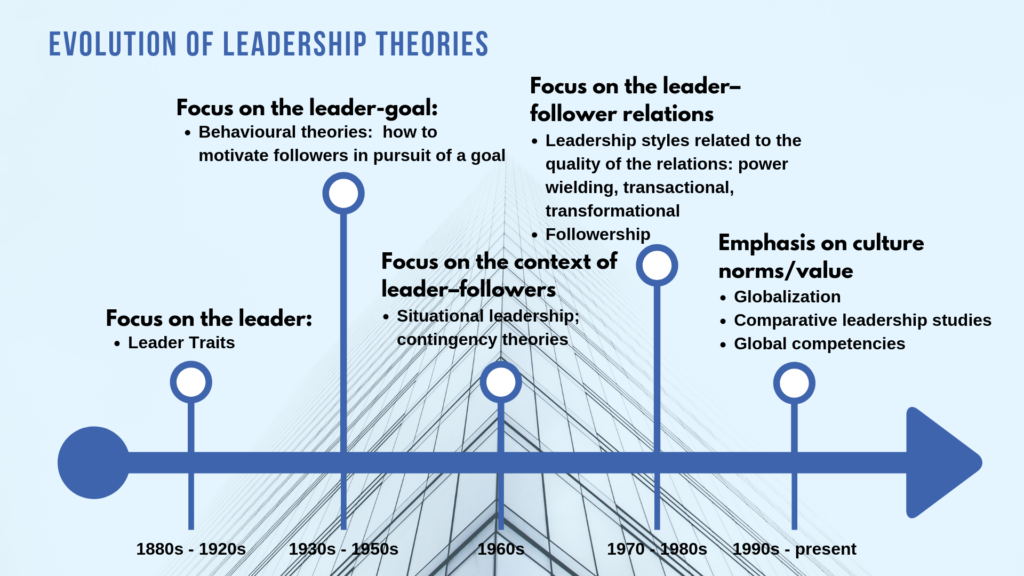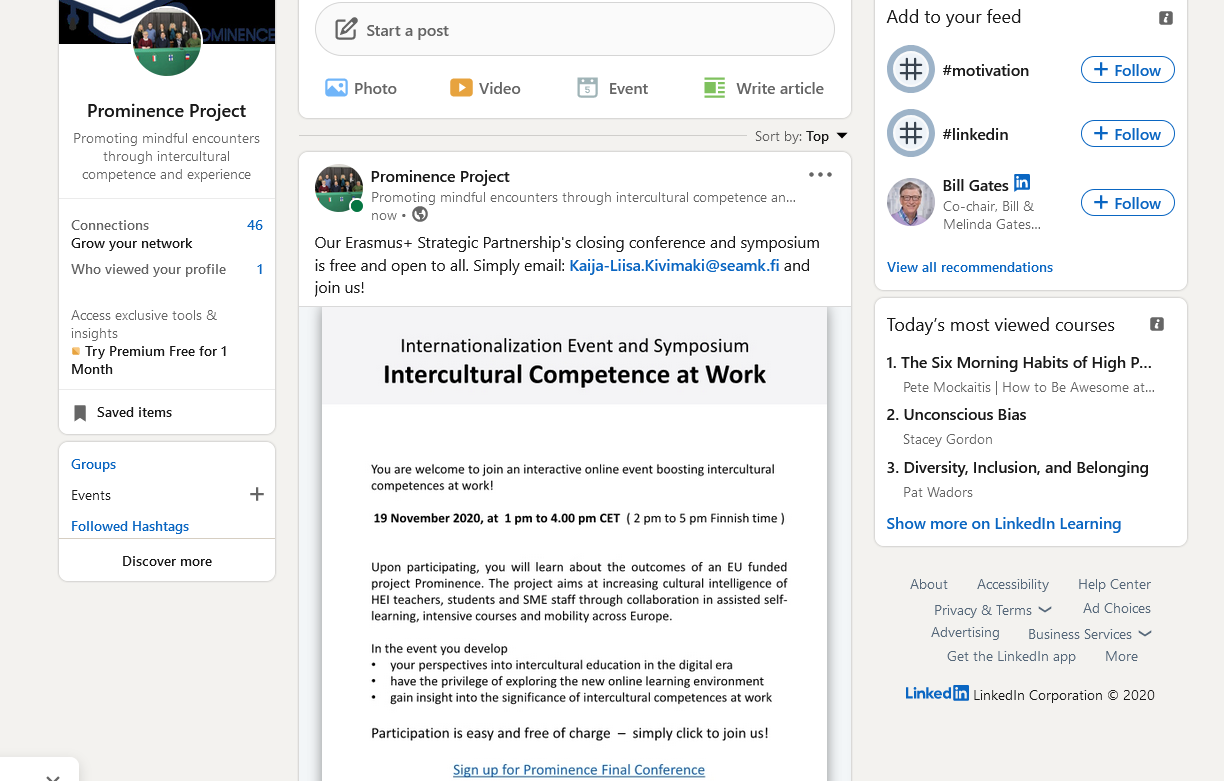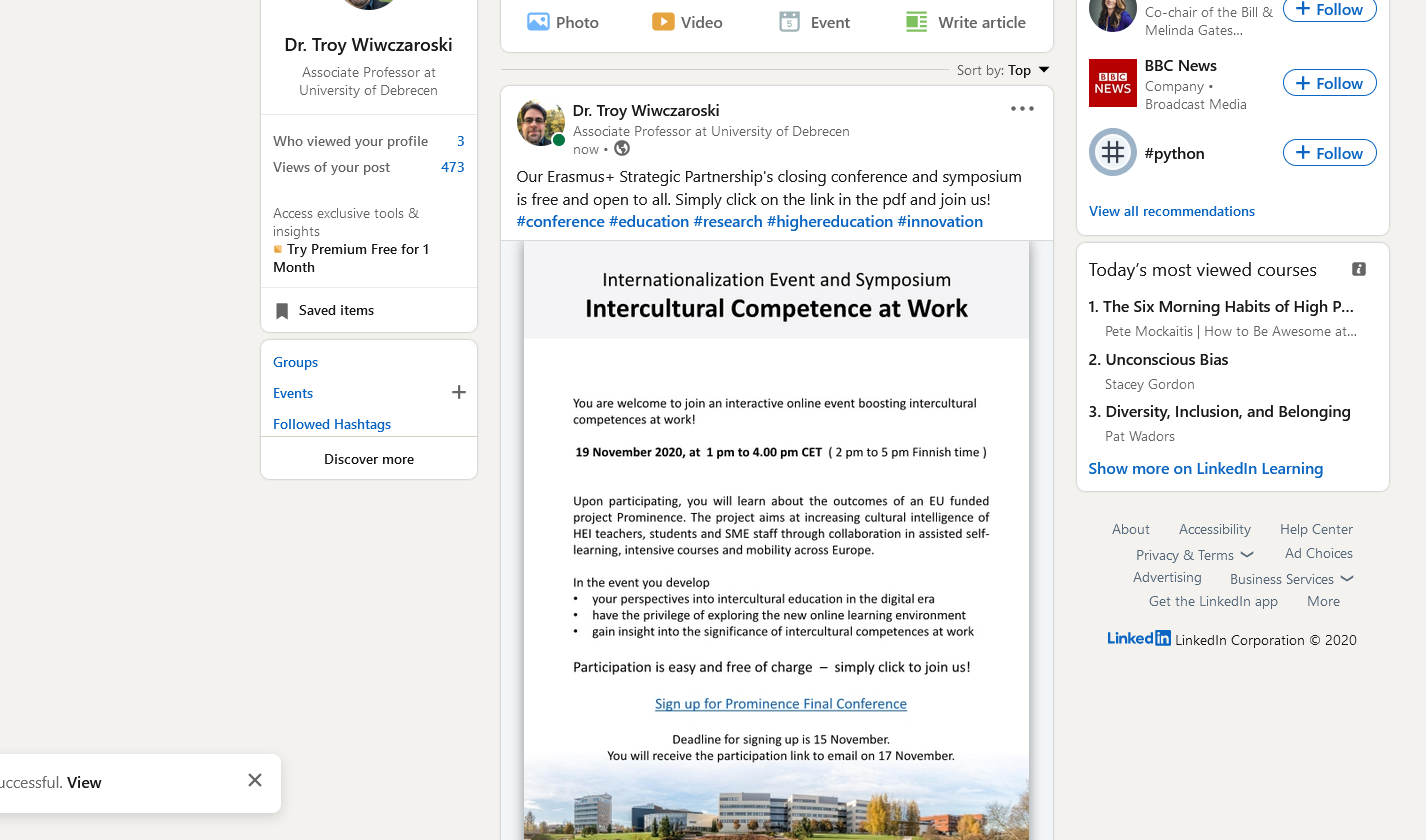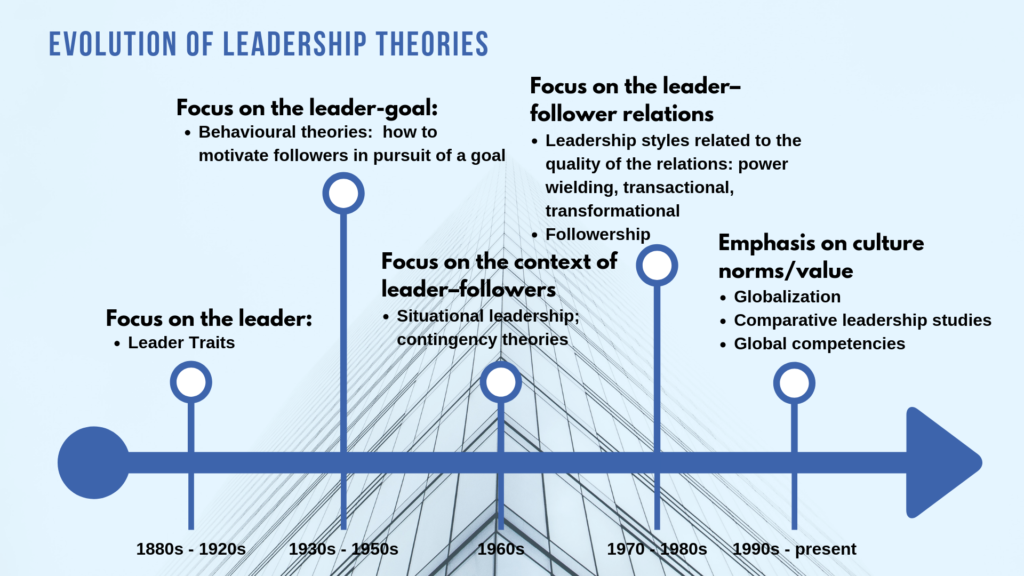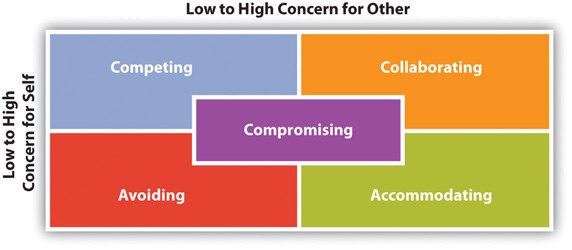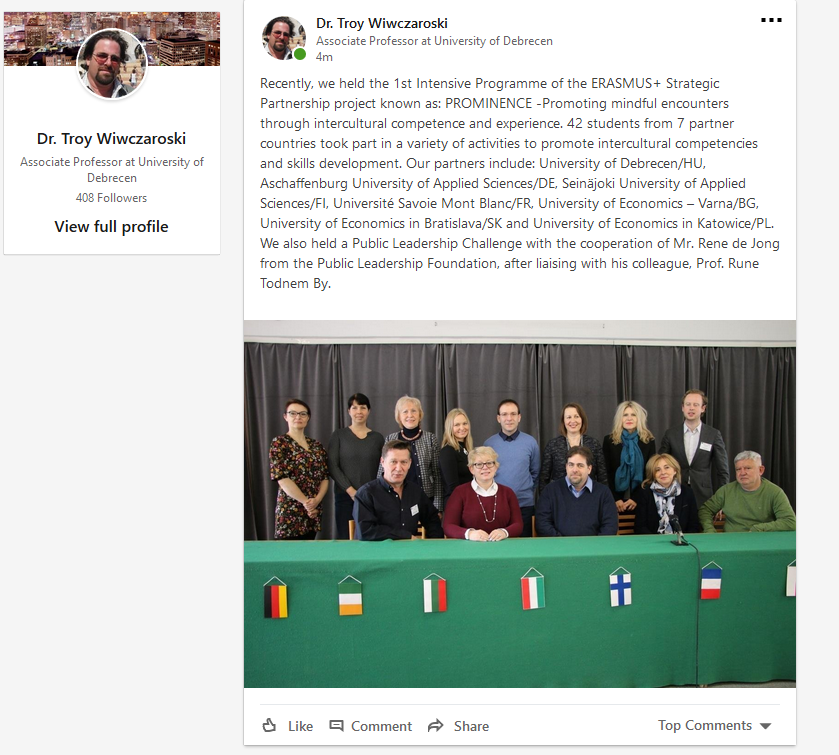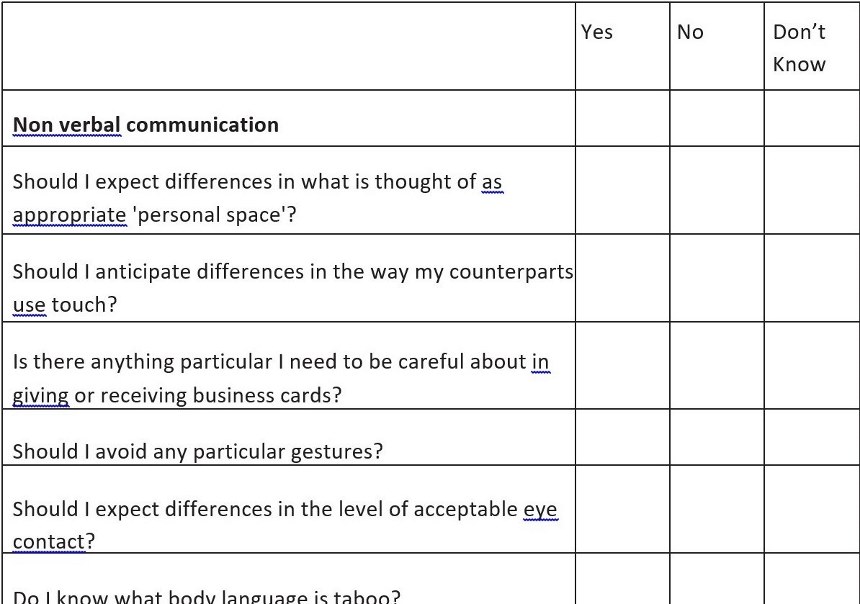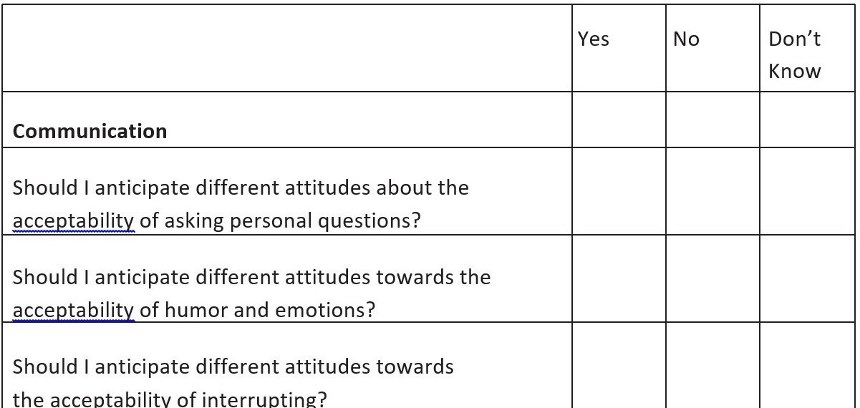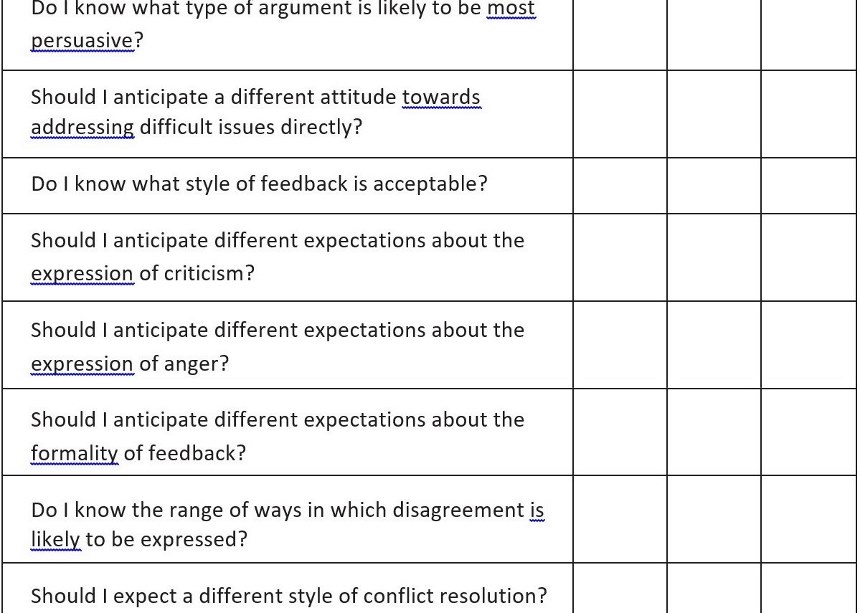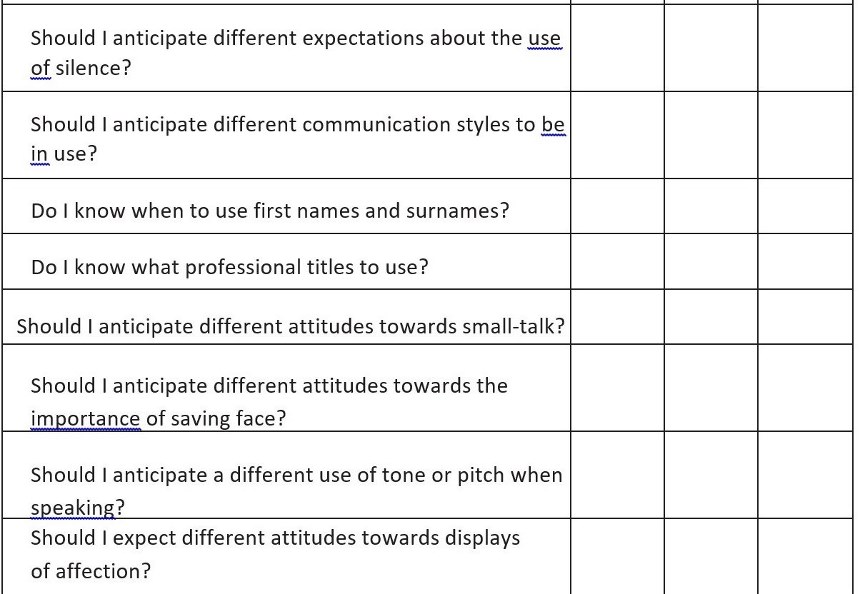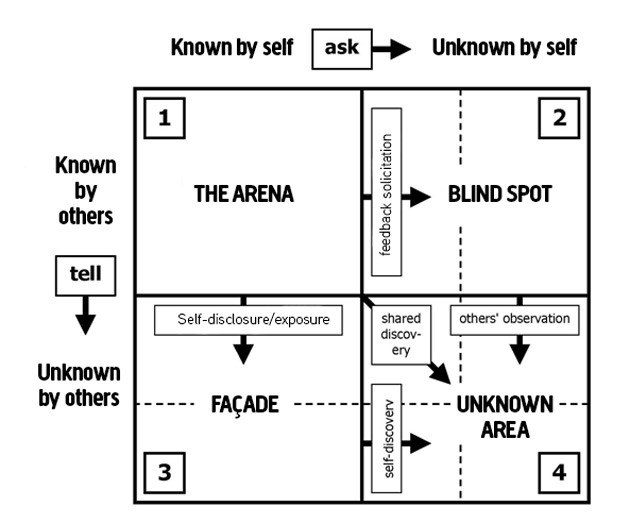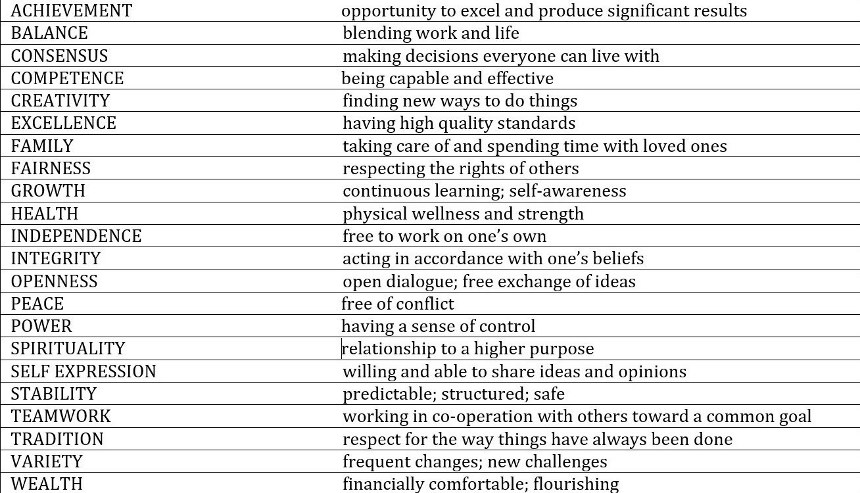learning outcomes
You will get familiar with various approaches to leadership: from focus on the leadership personality through emphasis on the dynamics of the leader-followers relationship to a multi-layered approach taking into account various context factors
You will understand how in the process of globalization the focus in leadership studies has shifted towards national level leadership studies as well as global leadership competences identification
You will be aware of some interrelations between culture and leadership and implications for theoretical analyses and practice in a global context
You will increase self-awareness of your own culture profile in the framework of selected cross-cultural leadership theories
leadership theories at a glance
- Leader-focused theories: trait theory
- Relationship-focused theories: transactional leadership, transformational leadership, followership
- Context-focused theories: contingency leadership theories
- Leadership and culture context: towards global leadership
- Questions
Which traits, skills and competencies make good leaders great?
Why has there been so much interest lately in global leadership?
How would you define leadership?
Study Task 1
Self-assessment Leadership Tool
Firstly, take your time to identify your leadership style. Just click on the button below and complete the online test.
Leadership. Definitions
The ability to influence a group toward the achievement of a vision or set of goals.
Robbins & Judge, 2013, p. 368
There are two primary sources of this influence: formal, e.g. managerial rank, and informal, e.g. group dynamics and interpersonal relationships. Irrespective of the source, leadership involves interaction between leader and followers which takes place in, and therefore is modified by, a specific context. Cultural factors are a vital aspect of this context, especially in an international environment.
A variety of leadership theories has arisen from the efforts to explain the nature and mechanics of leadership – see the figure below.

Study Task 2
Leadership Styles and Situations Matching Exercise
Carefully read the situations presented in the example below. Which leadership style do you consider most appropriate? Why? If you wish, you can print your answers for further reflection.
1. Leader-focused theories
2. Relationship-focused theories
Leadership is an interaction between two parties – leaders and their followers. Followers are subordinates who have less power, authority, and influence” who in most cases follow the rules and behave according to expected standards of behaviour (Kellerman, 2008).
Followership consists of emotional and rational engagement with someone in a higher formal or informal position. Followership can be defined as “the capacity or willingness to follow a leader” (Merriam Webster Online Dictionary, 2018). Some of its sources are trust, dedication, communication, and skills. Followers add value to an organisation as collaborators with leaders in achieving organisational success.
The focus on the relationship between the leader and the follower has two main aspects – transactional and transformational. Burns (1978) and Bass (1985) make a clear distinction between these two concepts. A comparison between transactional and transformational leaders is shown in the next table.
| Transactional Leader | Transformational Leader |
|---|---|
| Contingent Reward: Contracts exchange of rewards for effort, promises rewards for good performance, recognizes accomplishments | Idealized Influence: Provides vision and sense of mission, instils pride, gains respect and trust |
| Management by Exception (active): Watches and searches for deviations from rules and standards, takes correct action | Inspirational Motivation: Communicates high expectations, uses symbols to focus efforts, expresses important purposes in simple ways |
| Management by Exception (passive): Intervenes only if standards are not met | Intellectual Stimulation: Promotes intelligence, rationality, and careful problem solving |
| Laissez-Faire: Abdicates responsibilities, avoids making decisions | Individualized Consideration: Gives personal attention, treats each employee individually, coaches, advises |
Source: Organizational behavior by S. P. Robbins, & T. A. Judge, 2013, Boston: Pearson, p. 383.
According to Bass and Avolio (1994) transformational leadership consists of four components: 1/ idealised influence; 2/ inspirational motivation ; 3/ intellectual stimulation; 4/ individualised consideration.
The sole purpose of transformational leadership is to empower followers to keep developing themselves and improve their performance beyond their expectations, thus revealing their true potential. This leads to qualitative transformations of the organizational processes and better fulfilment of the organizational goals. Nevertheless, transformational leadership cannot always succeed in its objectives due to the influence of different contextual factors.
3. Context-focused theories
While the traits theory focused on the role of the leader personality irrespective of the follower ability and motivation, or the interaction between the leader and followers, contingency theories and situational theories adopted a new approach to the study of leadership, emphasizing the importance of the situation, that is context (see the first figure). These theories argue that the follower competence and motivation greatly influence leadership styles.
Fiedler’s contingency theory (1967) hypothesizes that leadership effectiveness largely depends on whether context, or the situation, favours or hinders the performance of followers, thus forcing leaders to adapt an appropriate style. Context is characterized by three key contingencies: leader-member relations, task structure and position power.
According to this theory, the situation is favourable, that is, the leader is in more control and has a greater influence, when there is a good leader-member relation, a highly structured task, and high leader position power. In any other case leaders needs to adapt their styles to improve the situation and boost their impact. For example, in case of low ability or motivation of followers, but with fairly good relations between the leader and followers, the leader needs to embrace a task-oriented leadership style, that is, describe and break down the task in more detail, and offer more guidance. In case of good ability and motivation of followers, but low trust in the leader, the leader has to embrace a relations-oriented leadership style and work on improving leader-member relations to change the situation.
Hersey and Blanchard theory (1969) outlined four distinctive leadership styles: directing, coaching, supporting, and delegating.
4. Leadership and Culture Context: towards global leadership
Leadership theories have widely benefited from the development of intercultural communication and intercultural business studies. The work of E. Hall, G. Hofstede, F. Trompenaars has greatly influenced the understanding of the role of culture at national and organizational level and subsequently the appreciation of culture dimensions, culture patterns and culture context in the study of culture-leadership relation.
Leadership and GLOBE’s Culturally Endorsed Leadership Theory (CLT)
An example of study of the cultural context and its relation to leadership studies is the Culturally Endorsed Leadership Theory.
The GLOBE team understood leadership as “the ability to motivate, influence, and enable individuals to contribute to the objectives of organizations of which they are members” (House et al., 2004, p. xxii).
GLOBE study (2004) identified several cultural dimensions: performance orientation, assertiveness, future orientation, humane orientation, institutional collectivism, in-group collectivism, gender egalitarianism, power distance, uncertainty avoidance. For each of the nine culture dimensions GLOBE researchers were able to measure and validate country scores, as well as country cluster scores. Studying the relationship between leadership and culture, GLOBE (2004) research team identified cultural dimensions that can best predict desirable leadership traits. For example, societies that put high value on high performance orientation approve of leaders who are charismatic, participative and team-oriented.
Study Task 3
GLOBE Research
Using the Culture Groups section of GLOBE tool, identify the prevalent leadership styles of a chosen country or country cluster, e.g. Eastern Europe:
1/ Analyse cultural practices and values in the respective country/cluster
2/ Identify leadership scores for outstanding leadership
The research team examined leadership at the level of national culture, hypothesizing that based on their cultural values, beliefs and assumptions, members of different societies may have differing expectations from their leaders.
In 2014, in the second phase of their work, the GLOBE team focused on CEO leadership behaviours and extended understanding of leadership, defining it as “the ability of an individual to influence, motivate, and enable others to contribute toward the effectiveness and success of the organizations of which they are members” (House et al., 2014, p. 17).
What is the new emphasis in the current definition (from 2014)?
What caused this shift in emphasis?
The main question addressed in the second phase was how national culture influences the kinds of leadership expected in society. It was hypothesized that “societal culture values would influence both societal leadership expectations and CEO leadership behavior directly” (GLOBE, 2014).
Other studies have provided additional insights on cultural clusters and leadership effectiveness. Richard Lewis (2018), for instance, presented his well-known model from 1990s, the so-called LMR model around three cultural clusters: linear-active; multi-active and reactive.
Study Task 4
The Lewis Model – Dimensions of Behaviour
1/ Using the LMR test below identify your individual cultural profile.
2/ Read the article on R. Lewis LMR model here.
3/ Analyse your national culture profile and compare it to your individual profile.
The comparative leadership studies subfield has also contributed to a better understanding of individual culture’s conceptualization of leadership. These studies have gone beyond the Western-centric view, focusing on various cultural contexts, e.g. McManus and Perruci (2015) outline Western, Latin American, Islamic, African, Buddhist and East Asian contexts in their comparative studies.
Many scholars believe that the intensification of globalization in recent years has led to a steep learning curve among the participants in the leadership framework and as a result of the interaction-induced changes in the cultural practices we can foresee changes in our own norms, beliefs and values.
5. Conclusion
The approach to leadership has evolved from leader-centric models (trait and behavioural models) through the dynamics of leader-followers relationships (transactional and transformational leadership models) to one that takes into account the context to a greater degree (situational leadership, contingency leadership theories).
With the process of globalization there have been several new approaches to leadership:
- comparative leadership studies – national cluster models (GLOBE 2004, GLOBE 2014, R. Lewis LMR model);
- a greater focus on the cultural context of leader and followers with view of the increasingly culturally diverse teams;
- the leader-centric model has been revisited, taking into account all the complex factors of individual culture’s shaping in a period of globalization, dynamic environment and dramatic changes (digitization, disruptive technological changes, global climate and political concerns), with view of identifying universal global leadership competences and metaskills.
The evolution of approaches to leadership and changes of emphasis has been summarized in the following figure.
Questions for discussion
- Which theories infer that leaders are born not made and vice versa?
- What are the differences between transactional and transformational leadership?
- What advantages do contingency theories and situational theories offer over earlier theories?
- Can country specific culture dimensions serve as predictors of leadership styles? If yes, give examples. Watch the video “How Cultures Across the World Approach Leadership“.
- How have leadership studies benefited from intercultural studies and intercultural business communication studies?
Questions for reflection
- In your opinion, which traits, skills and competences make a good leader? Watch the video “Good Leadership Is Contagious“.
- What is the rationale for the rise of global leadership as a separate field of study?
- How important do you think emotional intelligence is for good leadership? Watch the video “What Makes a Leader?“.
Video Resources
https://hbr.org/video/5476393165001/how-cultures-across-the-world-approach-leadership
https://hbr.org/video/4762338922001/good-leadership-is-contagious
https://hbr.org/video/5236216251001/what-makes-a-leader
For more information on the topic – check out the E-book chapter on Leadership Theories
Sources
- Bass, B. (1985). Leadership and performance beyond expectations. New York: Free Press.
- Burns, J. M. G. (1978). Leadership. New York: Harper & Row.
- Fiedler, F. E. (1967). A Theory of Leadership Effectiveness, New York, NY: McGraw-Hill.
- Ghiselli, E. (1963). The Validity of Management Traits in Relation to Occupational Level. Personnel Psychology, 16(2), 109–113.
- Hersey, P., & Blanchard, P. (1969). The life cycle theory of leadership. Training and Development Journal, 23 (5), 26–34.
- House, R. J., Dorfman, P. W., Javidan, M., Hanges, P. J., & de Luque, M. F. S. (2014). Strategic leadership across cultures: GLOBE study of CEO leadership behavior and effectiveness in 24 countries. Thousand Oaks, CA: Sage.
- Kellerman, B. (2008). Followership: How Followers Are Creating Change and Changing Leaders. New York: Harvard Business Press.
- Lewis, R.D. (2018). When Cultures Collide: Leading Across Cultures. 4th edition. Quercus.
- McManus, R.B, Perruci, G. (2015). Understanding leadership: an arts and humanities perspective. London : Routledge, Taylor & Francis Group.
- Mullins, L. J. (2010). Management and organisational behaviour. Harlow: Financial Times Prentice Hall.
- Robbins, S. P., & Judge, T. A. (2013). Organizational behavior. Boston: Pearson.
- GLOBE. (2004). An overview of the 2004 study: Understanding the Relationship Between National Culture, Societal Effectiveness and Desirable Leadership Attributes. Retrieved December 16, 2018 from the GLOBE at https://globeproject.com/study_2004_2007#findings
- GLOBE. (2014). GLOBE CEO STUDY 2014. Retrieved December 16, 2018 from the GLOBE at https://globeproject.com/study_2014
- Merriam Webster Online Dictionary. (2018). Definition of followership. Retrieved December 17, 2018 from the Merriam Webster Online Dictionary at www.merriam-webster.com/dictionary/followership


